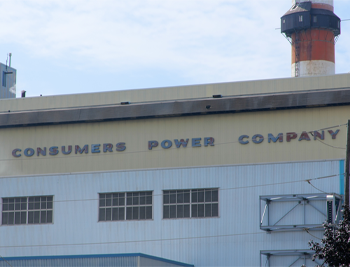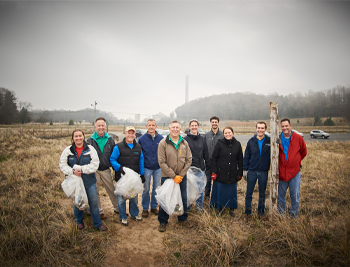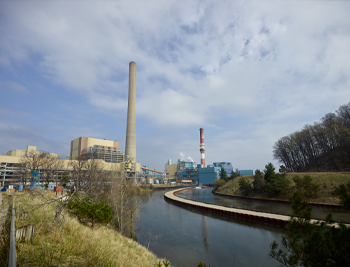We plan to support the employees and communities affected by complex’s retirement by finding new roles for those who want to stay, helping local leaders pursue new economic futures and fulfilling our environmental responsibilities at the site.
J.H. Campbell Complex Retirement
Campbell Complex Retirement Begins for a Better Future
As part of our mission to become a leaner and flexible energy company, we're officially retiring our J.H. Campbell Complex. This will allow us to get closer to end coal use, lower our carbon footprint, and add more renewable energy for us to deliver.
A Look Back at the Campbell Complex

The Complex’s History
The J.H. Campbell Complex began operating in 1962 and generates up to 1,450 megawatts of electricity – enough to serve a million people! The 2000-acre facility was named after James H. Campbell who was a former company president from 1960 to 1972.

Community Around the Complex
The complex has many recreational features including its jetties, which ensure there’s enough water flow to cool the water supply. Both homeowners and boaters use this channel to access Lake Michigan. There’s also a mile-long public boardwalk with platforms and public access available for fishing and recreational activities.

Maintaining the Complex’s Features
We plan to keep these recreation features a priority as we plan for the complex’s retirement. We’re working with the Environment, Great Lakes, and Energy and the Department of Natural Resources to figure out a way to keep these features around.
Complex Retirement Timeline
-

2021 - 2024
The J.H. Campbell Complex will be prepared for full retirement.
-

2025 - 2026
The complex will officially go into retirement.
-

2026 and On
The complex will be demolished with a plan to restore the site over time.
Our Just Transition Process
We’re committed to a Just Transition for co-workers, communities and the planet while we’re leading Michigan’s renewable energy transformation. Our Just Transition process ensures that as we transform over to renewable energy, we protect those that are affected by the closure and removal of coal plants.
For employees, we’ll find new roles for those who want to stay. For communities, we’ll help local leaders pursue new economic futures while fulfilling our environmental responsibilities at the sites.
For proof that we’ll keep our promises, look no further than the progress made with the seven coal-fired units we retired in 2016. These are known as the “Classic Seven.” Closing these units was the first major step in our journey away from coal. From our Classic Seven experience, we created a three-step Just Transition process for the future:
Our Transition Process
If you’d like to learn more about our Just Transition process, please click the button below.The Future of the Complex
We plan to support the employees and communities affected by complex’s retirement by finding new roles for those who want to stay, helping local leaders pursue new economic futures and fulfilling our environmental responsibilities at the site.

